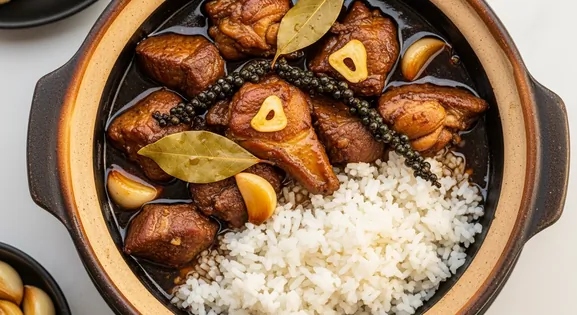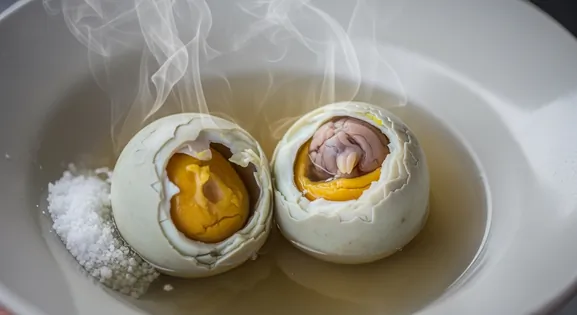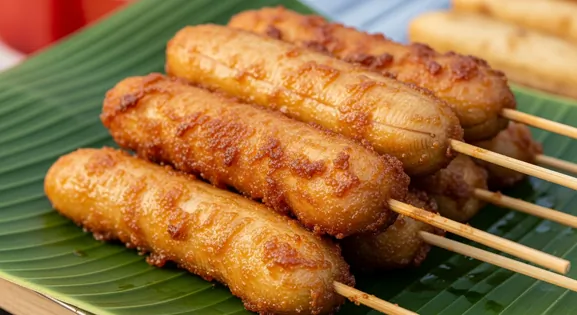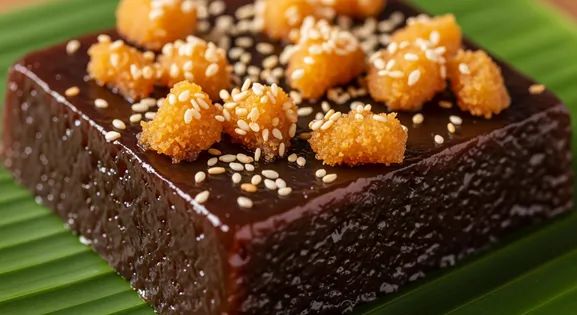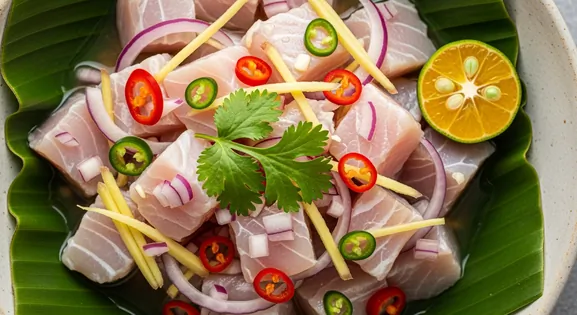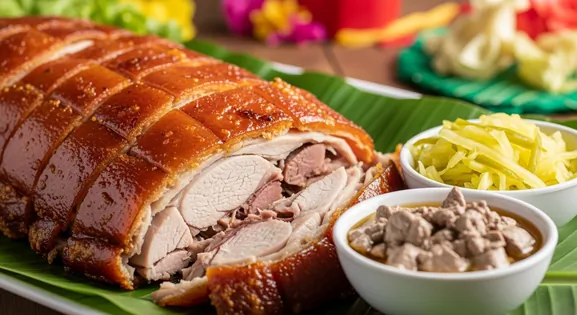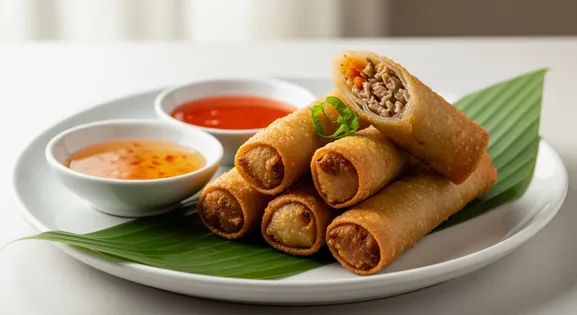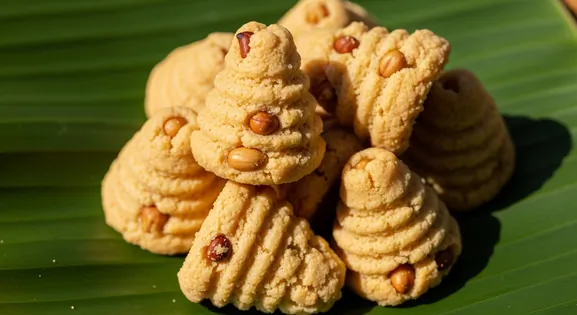Sikwate in Philippines: A Complete Food Lover's Guide
Sikwate (also Tsokolate de Batirol)
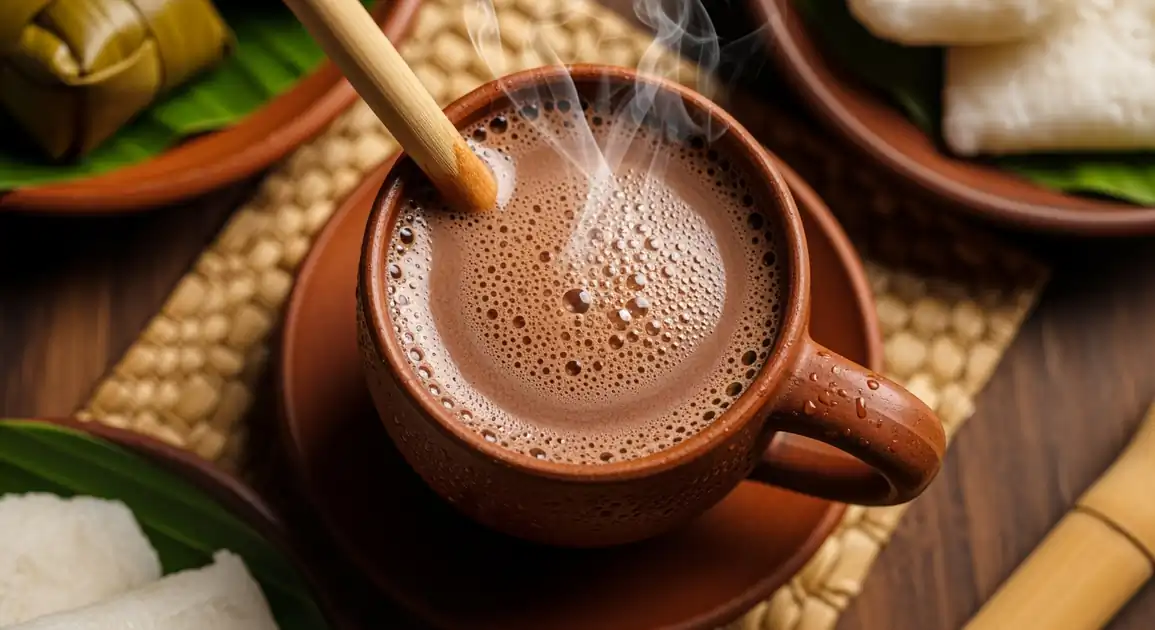
Understanding This Dish: An Introduction
Sikwate is a traditional Filipino hot chocolate, beloved for its rich, intense cacao flavor and comforting warmth. Made from locally sourced roasted cacao beans ground into tablets called 'tablea', it's prepared by whisking the dissolved tablea in hot water or milk, often using a wooden 'batirol' to achieve its characteristic thick, frothy texture. It offers a less sweet, more robust chocolate experience compared to typical instant cocoa.
From Humble Origins: A Brief History
Cacao was introduced to the Philippines by the Spanish during the colonial era. Filipinos adopted it, creating 'tablea' and the tradition of drinking hot chocolate ('tsokolate' or 'sikwate'). It became a staple for breakfast, merienda (snacks), and special occasions, often associated with hospitality and celebrations. The use of the 'batirol' is a distinct Filipino technique enhancing the drink's texture.
Deconstructing Sikwate (Filipino Hot Chocolate): Ingredients and Method
Pure tablea tablets are dissolved in boiling water or milk within a special pot ('tsokolatera'). Sugar is added to taste. The mixture is then vigorously whisked by rapidly spinning a 'batirol' between the palms until the desired thickness and frothiness are achieved. The quality heavily depends on the purity and roast of the tablea used.
Key Ingredients of Sikwate (Filipino Hot Chocolate)
Tablea
These are pure, unsweetened roasted cacao tablets, the heart of Sikwate. They provide the deep, earthy, and slightly bitter chocolate flavor.
Quality indicator: Look for tablea made from 100% pure cacao, ideally from local Philippine farms, indicating rich flavor and authenticity.
Water or Milk
The liquid base for dissolving the tablea. Water yields a purer, more intense cacao flavor, while milk (fresh, evaporated, or condensed) creates a creamier, richer drink.
Quality indicator: Ensure the water is clean and boiled, or the milk is fresh and properly stored, to ensure safety and taste.
Sugar (Optional)
Added to taste, sugar balances the bitterness of the cacao. The amount can vary widely depending on personal preference and the desired sweetness level.
Quality indicator: High-quality Sikwate should not rely on excessive sugar to mask poor cacao quality; it should enhance, not dominate, the flavor.
Local Sikwate (Filipino Hot Chocolate) Variations in Philippines
Sikwate with Milk
Prepared with milk (fresh, evaporated, or sometimes condensed) instead of or in addition to water, resulting in a creamier, richer taste.
Sikwate with Water
The traditional, simpler version made only with tablea, water, and sugar. Offers a purer, more intense cacao flavor. This version is vegan.
Sweetness Level Variation
Sweetness can usually be adjusted upon request ('less sugar' or 'more sugar'). Some places might have a standard sweetness level.
Spiced Sikwate (Rare)
Less common, but some variations might include spices like cinnamon or vanilla, though not traditional.
Perfect Partners: What to Pair
Puto Maya
Traditional Filipino
A steamed sticky rice cake, often served with fresh mangoes. Its slightly salty and subtly sweet profile provides a delightful contrast to the rich, bitter notes of Sikwate, especially popular in Cebu.
Pan de Sal
Traditional Filipino Bread
Soft, slightly sweet Filipino bread rolls, perfect for dipping into the thick, warm Sikwate. The bread absorbs the chocolatey goodness, offering a comforting and satisfying bite.
Universal Quality Indicators
What to Look For
-
Prepared fresh upon ordering
Ensures the drink is served hot and hasn't been sitting, preserving flavor and minimizing any potential bacterial growth (though boiling makes it generally safe).
-
Use of real tablea (visible tablets or info from vendor)
Guarantees authentic flavor. Avoid places using instant powders which might have many additives.
-
Served steaming hot
Sikwate is meant to be enjoyed hot. Proper temperature ensures the tablea fats are well emulsified.
-
Clean cups, 'batirol', and preparation area
General hygiene is always important. Ensure utensils and serving cups look clean.
-
Use of a 'batirol' for preparation
Indicates a traditional preparation method focused on achieving the right texture, often a sign of quality.
What to avoid
-
Sikwate kept lukewarm in a large dispenser for hours
Flavor and texture degrade over time. Freshly prepared is always better.
-
Excessively sweet taste
Sometimes used to mask lower quality, less flavorful tablea. Good Sikwate balances bitterness and sweetness.
-
Very watery or thin consistency
Suggests not enough tablea was used or it wasn't properly emulsified. Should be richer and slightly thick.
-
Places using generic 'chocolate drink' powder instead of tablea
This isn't authentic Sikwate and will lack the characteristic depth of flavor and texture.
Explore Sikwate (Filipino Hot Chocolate) in Detail: City Guides
Discover where to find the best Sikwate (Filipino Hot Chocolate) and learn local tips in these cities:
Dietary Information
Dietary Information
Important Note for Travelers: Your safety is our priority. Below are the common allergens associated with the traditional preparation of this dish. However, recipes and ingredients can vary significantly between establishments. Always confirm all ingredients directly with the food vendor before ordering, especially if you have a severe allergy.
Potential Allergens
Dietary Suitability
How to Order Sikwate (Filipino Hot Chocolate)
Frequently Asked Questions about Sikwate (Filipino Hot Chocolate)
What exactly is Sikwate?
Sikwate is a traditional Filipino hot chocolate drink made from roasted ground cacao beans, known locally as 'tablea'. It's typically prepared by dissolving tablea tablets in boiling water or milk and whisking vigorously, often with a wooden tool called a 'batirol', to create a rich, slightly thick, and often frothy consistency. Sugar is usually added to taste.
How does Sikwate taste?
Authentic Sikwate has a deep, rich, slightly bitter cacao flavor, distinct from sweeter, milkier commercial hot chocolates. Its texture is typically thicker and can have a slightly grainy feel from the ground cacao. Sweetness varies depending on preparation.
Is Sikwate safe to drink?
Sikwate is generally very safe as it's prepared by boiling water or milk and dissolving the tablea. Key factors for quality are the purity of the tablea used and the cleanliness of the preparation area and utensils. Opt for places that prepare it fresh.
What's the difference between Sikwate and Tsokolate?
'Sikwate' is the common term in the Visayas region (like Cebu, Bohol), while 'Tsokolate' (derived from Spanish 'chocolate') is more common in Luzon. 'Tsokolate de Batirol' specifically refers to the drink prepared using the traditional wooden whisk (batirol). Essentially, they refer to the same type of Filipino hot cacao drink.
Is Sikwate vegetarian or vegan?
Sikwate made traditionally with only tablea, water, and sugar is both vegetarian and vegan. However, it's very commonly prepared with milk (fresh, evaporated, or condensed), making it vegetarian but not vegan. Always specify 'water only' ('tubig lang') if you require a vegan version.
Is Sikwate gluten-free?
Yes, traditional Sikwate made from pure tablea (cacao), water or milk, and sugar is naturally gluten-free. The core ingredient, 'tablea,' consists solely of ground cacao beans, which are inherently free of gluten. As long as no gluten-containing additives are introduced during preparation, such as certain flavorings or thickeners, Sikwate remains a safe and delicious option for those with gluten sensitivities or celiac disease.
Expert How-To Guides about Sikwate (Filipino Hot Chocolate)
How to Spot Quality Sikwate
Identify authentic and well-prepared Sikwate for the best experience, ensuring you enjoy this traditional Filipino beverage at its finest.
- Look for places preparing it fresh upon order, not from a large pre-made batch.
- Check if they use real tablea (dark cacao tablets), not instant powder mix.
- Ideally, watch for the use of a 'batirol' for frothing, indicating traditional preparation.
- The drink should be steaming hot, rich dark brown, and reasonably thick.
- Ask if they use pure tablea; good vendors are often proud of their cacao source.
- Taste: It should have a deep cacao flavor, not overly sweet or watery.
Pairing Sikwate with Filipino Snacks
Sikwate is often enjoyed with traditional Filipino snacks, enhancing the experience. Discover classic pairings that complement its rich flavor.
- Puto Maya: A steamed sticky rice cake, often served with fresh mangoes. The slight saltiness and texture contrast beautifully with Sikwate (classic Cebuano pairing).
- Budbud/Suman: Sticky rice logs cooked in coconut milk and wrapped in banana leaves. Various types exist (like Budbud Kabog made from millet).
- Pan de Sal: Simple, slightly sweet Filipino bread rolls are great for dipping.
- Bibingka/Puto Bumbong: Rice cakes traditionally popular during Christmas season but available year-round in some places.
- Empanadas or Ensaymada: Savory pastries (empanada) or sweet brioche (ensaymada) also pair well.
Our Commitment to Quality
At Tasteplorers, our mission is to provide the most accurate and useful travel information in the world. To achieve this, all content on this site is created through our unique editorial framework. We utilize leading AI research tools, guided by our proprietary prompts, and a multi-stage validation process. This entire system is overseen by our editorial team to ensure everything we publish meets our high standards for accuracy, cultural nuance, and practical value for travelers.
Learn more about our Editorial Process and our Mission.
Countries
Explore regions
Europe
Discover Europe's diverse culinary landscape, from Mediterranean flavors to hearty Alpine fare. Learn to navigate markets, decode menus, and eat like a local.
Latin America & Caribbean
Discover the vibrant cuisines of Latin America & the Caribbean. Our expert guide covers everything from Mexican street food to Peruvian ceviche and market tips.
Oceania
Explore Oceania's diverse food scene. Learn about Polynesian earth ovens, Fijian feasts, and the vibrant café culture of Australia and New Zealand.
Southeast Asia
Explore Southeast Asia's diverse food cultures from Thailand to Vietnam. Get expert tips on navigating spice levels, choosing quality vendors, and understanding the rich traditions of the region.
